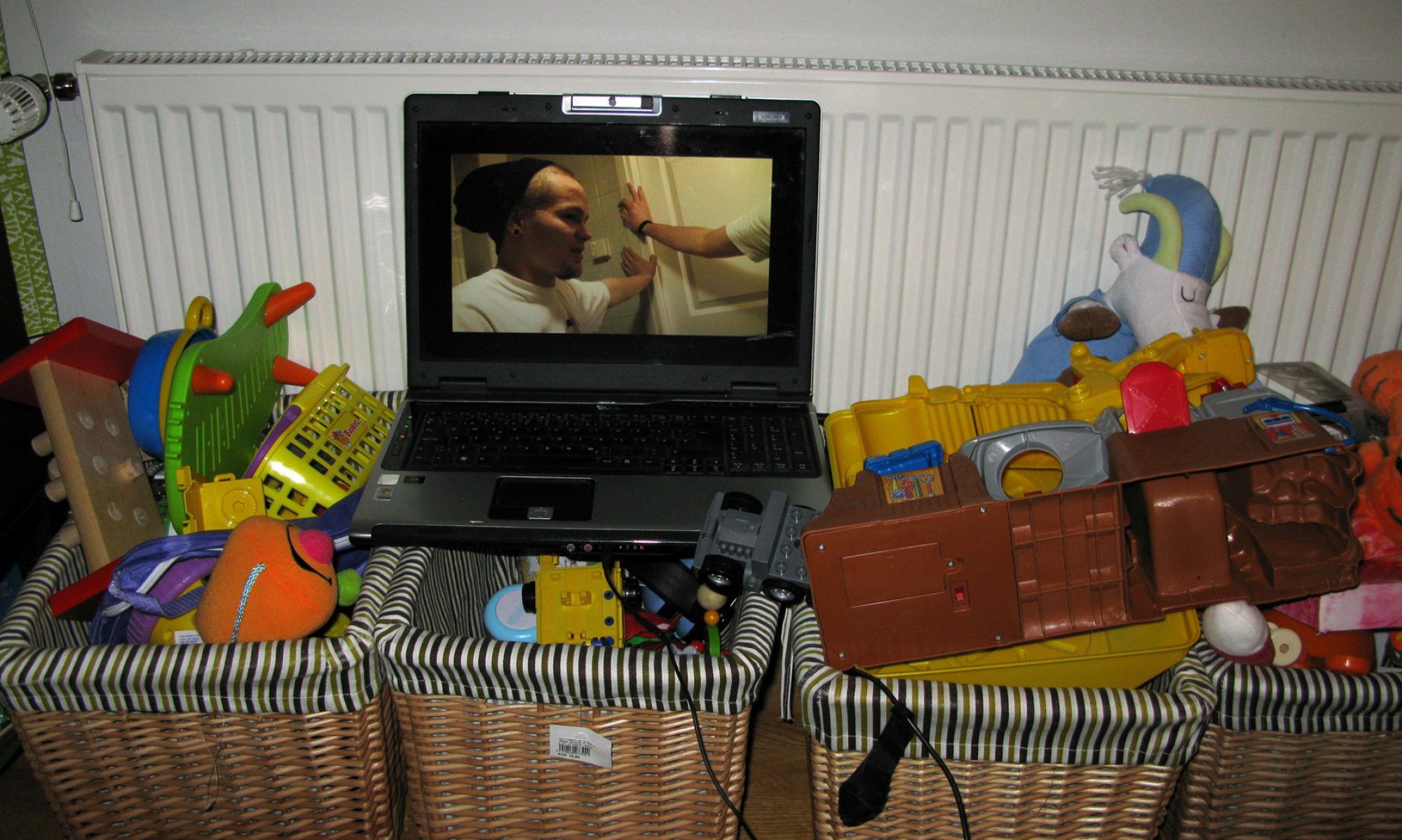Visited Theater Academy Dance department solo-demo evening by invitation of Matilda. The night included eight pieces in an almost 5 hour long potpourri.
Aino Purhoses “Never place a body in another body of water” was a solid start. She invited the audience to plant their feet in buckets of water while she played with water using various containers. The most striking moment was when she power-stirred plain water using a blender and then touched the moving water in the blender with her hand and face. I felt connected to her through my wet feet. She sang an improvised tune and curled inside an inflatable children’s water pool.
Riikka Laurilehto performed a piece which was framed with the text “Most of the materials used in this performance are not mine. It’s just another hybrid”. She worked with plastic toys, wore a jaguar bodysuit and sang. A Kaoss Pad 2 was used as an effect (Delay 29 spotted!). A humorous piece which felt inspired by The Queer Futurity of Plastic (2014) by Heather Davis.
Both of the pieces mentioned here were very similar to standard performance art pieces (single concept gestures, 20min and light hearted self-exposure to emphasize with). But as the artists were brilliant and fit dancer bodies everything looked a tad too perfect. The rest of the pieces were more standard contemporary dance (floorwork, tremors, intensive gazes and everyday choreography performed in an acrobatic manner).
Matilda’s piece was one of the best ones. She positioned the audience inside black squares which had been drawn on the floor using tape. Then she started with a warm up in semi-darkness (which looked elegant, lamps reflected reddish hues). After this she performed small breathing movements for the audience from inside a smaller black square. She was in an intimate relationship with her movements and we were invited to participate in her relationship to the movements – This relationship was the dance. I guess that the statement of the piece was: There is movement. Which is important.
Watching young dancers perform was a great way to tap into how young artists position themselves in regards to theory. Laurilehtos and Purhoses pieces felt like physical illustrations of new materialism and anthropogenic thinking. Because they have grown up with these theories (as artists), they know them well enough to play with their personal relationship to them. Their pieces were not about the-end-of-the-world but their relationship to allegations about the-end-of-the-world. This kind of relationship is often analysed as an ironic stance.. But I think they were just trying to be humans despite of theory.

